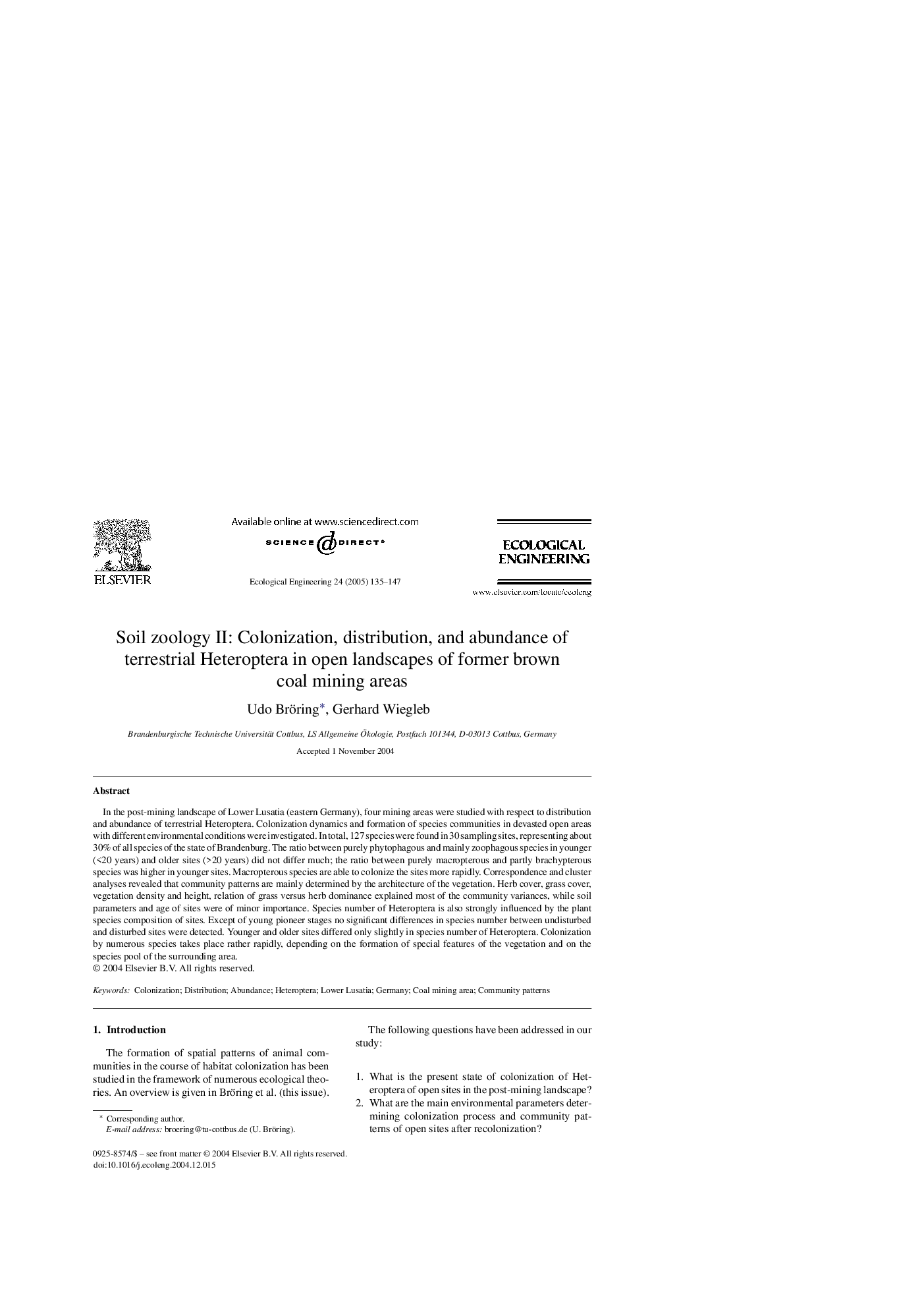| Article ID | Journal | Published Year | Pages | File Type |
|---|---|---|---|---|
| 9447419 | Ecological Engineering | 2005 | 13 Pages |
Abstract
In the post-mining landscape of Lower Lusatia (eastern Germany), four mining areas were studied with respect to distribution and abundance of terrestrial Heteroptera. Colonization dynamics and formation of species communities in devasted open areas with different environmental conditions were investigated. In total, 127 species were found in 30 sampling sites, representing about 30% of all species of the state of Brandenburg. The ratio between purely phytophagous and mainly zoophagous species in younger (<20 years) and older sites (>20 years) did not differ much; the ratio between purely macropterous and partly brachypterous species was higher in younger sites. Macropterous species are able to colonize the sites more rapidly. Correspondence and cluster analyses revealed that community patterns are mainly determined by the architecture of the vegetation. Herb cover, grass cover, vegetation density and height, relation of grass versus herb dominance explained most of the community variances, while soil parameters and age of sites were of minor importance. Species number of Heteroptera is also strongly influenced by the plant species composition of sites. Except of young pioneer stages no significant differences in species number between undisturbed and disturbed sites were detected. Younger and older sites differed only slightly in species number of Heteroptera. Colonization by numerous species takes place rather rapidly, depending on the formation of special features of the vegetation and on the species pool of the surrounding area.
Related Topics
Life Sciences
Agricultural and Biological Sciences
Ecology, Evolution, Behavior and Systematics
Authors
Udo Bröring, Gerhard Wiegleb,
